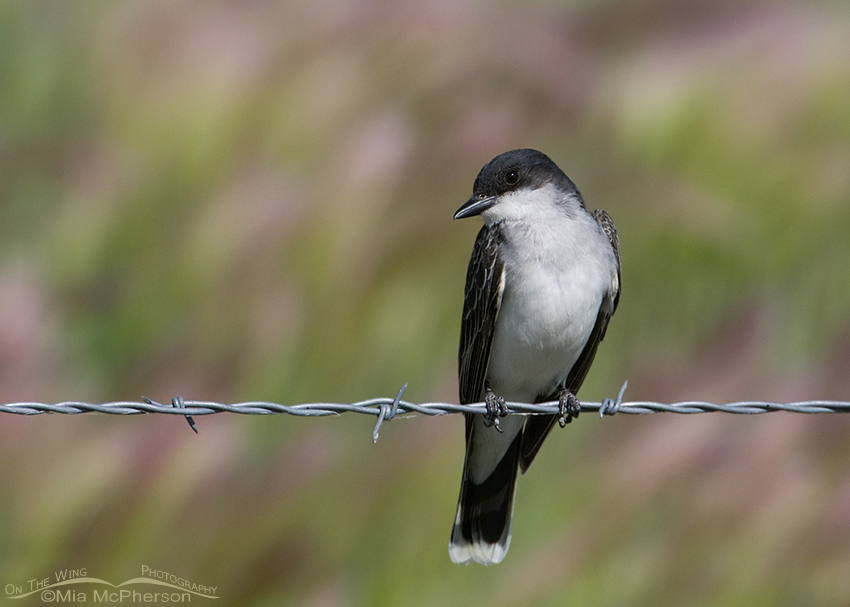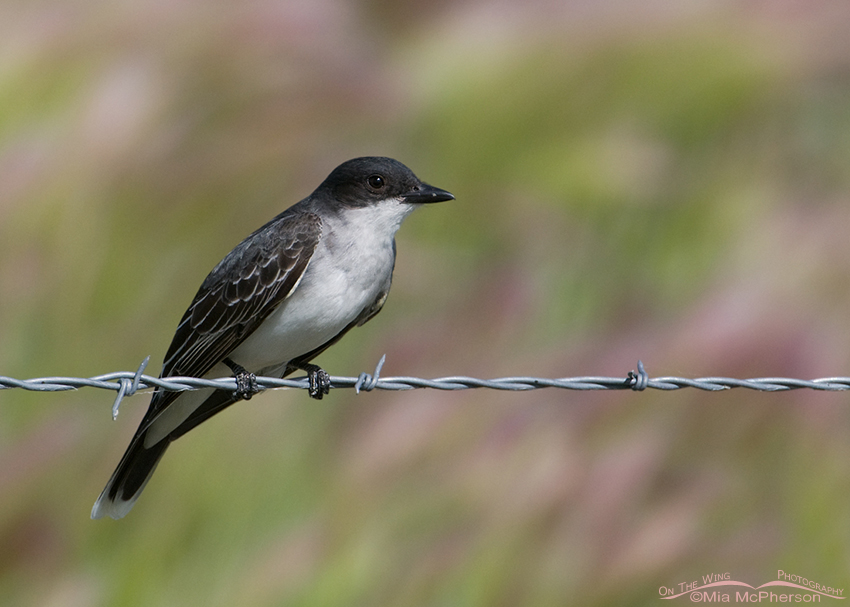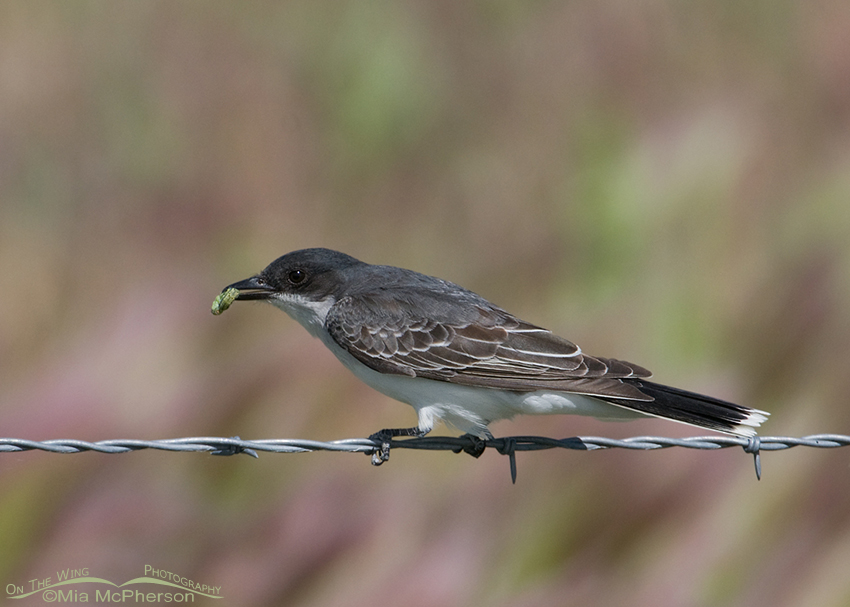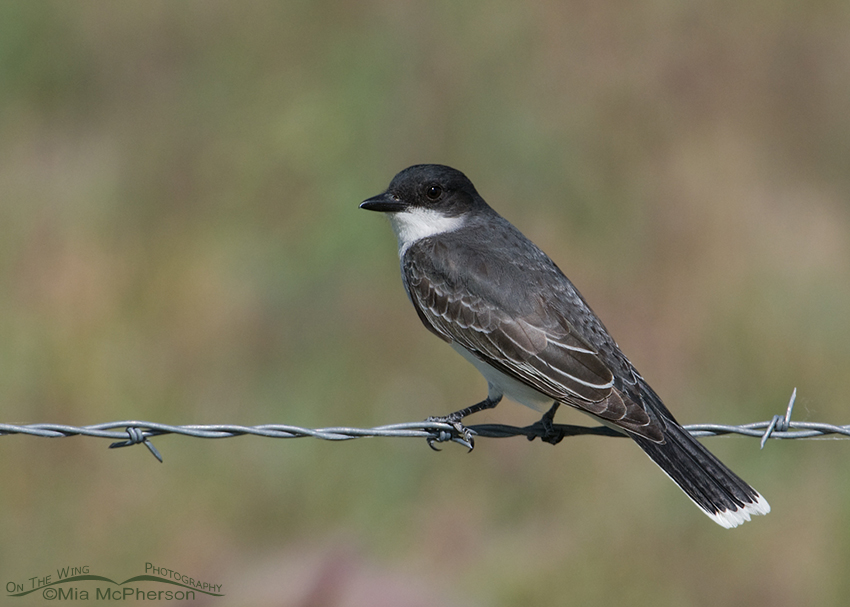With the large volume of photos I take each month it feels like I am always behind on editing images to post here on my blog and in my galleries, these springtime Eastern Kingbird images are from June of this year and I just got around to processing them this morning.
 Eastern Kingbird with tilted head – Nikon D300, f7.1, 1/1250, ISO 400, Nikkor 200-400mm VR with 1.4x TC at 400mm, natural light
Eastern Kingbird with tilted head – Nikon D300, f7.1, 1/1250, ISO 400, Nikkor 200-400mm VR with 1.4x TC at 400mm, natural light
The scientific name of Eastern Kingbirds is Tyrannus tyrannus, Tyrannus means “tyrant” and they are well named because they will harass any bird that comes near their nests including crows, ravens and much larger birds like hawks. They are fierce.
 Eastern Kingbird perched on a wire – Nikon D300, f7.1, 1/1250, ISO 400, Nikkor 200-400mm VR with 1.4x TC at 400mm, natural light
Eastern Kingbird perched on a wire – Nikon D300, f7.1, 1/1250, ISO 400, Nikkor 200-400mm VR with 1.4x TC at 400mm, natural light
Eastern Kingbirds feed primarily on insects and will “hawk” from wires, posts and branches to pounce on their prey. They also hover above the ground and then swoop down to snatch insects.
 Eastern Kingbird with prey – Nikon D300, f7.1, 1/1000, ISO 400, Nikkor 200-400mm VR with 1.4x TC at 400mm, natural light
Eastern Kingbird with prey – Nikon D300, f7.1, 1/1000, ISO 400, Nikkor 200-400mm VR with 1.4x TC at 400mm, natural light
The prey items I have seen Eastern Kingbirds with most often are dragonflies, crickets, grasshoppers and caterpillars.
 Eastern Kingbird back view – Nikon D300, f7.1, 1/1000, ISO 400, Nikkor 200-400mm VR with 1.4x TC at 400mm, natural light
Eastern Kingbird back view – Nikon D300, f7.1, 1/1000, ISO 400, Nikkor 200-400mm VR with 1.4x TC at 400mm, natural light
Eastern Kingbirds are migratory and spend the winter in tropical locations. I haven’t been seeing many of them lately so perhaps they have already begun to migrate to the south.
Life is good.
Mia
Click here to see more of my Eastern Kingbird photos plus facts and information about this species.


One of the nicest things about being back from my trip is being able to enjoy your lovely photos each day.
I’m very glad you feel that way Kim, thanks for the compliment!
Great series, Mia. I love kingbirds-they are handsome and regal.
Thanks Julie, I think they are too!
Exceptional images of the Eastern Kingbird! I’ve been seeing a lot them of late. They really are handsome looking birds.
I agree Julie, they are very handsome birds. Thanks much for your comment.
Mia, your record of posting and editing exceeds so many benchmarks by a long haul! I know what you’re saying about a backlog of photos, though.
Ingrid, every time I open an image folder from a certain date I cringe at all the photos I haven’t processed yet and feel so very far behind.
Neat series!
Thanks Dave
Super stuff! Favorite Kingbird in the states.
Thanks Laurence!
They love barbed wire, don’t they? Your photos are so crisp and clear, Mia. I just love them.
They sure do love barbed wire Tami! Thanks for your comment.
What a lovely bird, brilliant Mia.
Thank you much for commenting Bob!
Thanks Mia! I learned some new bird facts today and saw some marvelous photos. I especially like the pose in the first image. Has a certain ‘Robert de Niro’ stare quality Wonderful detail.
Wonderful detail.
Thanks Stu, yes, that first pose does look a touch Niroesque!